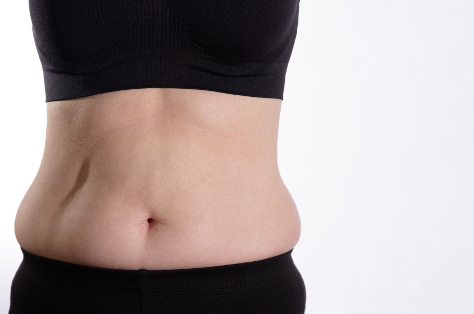The reasons explained why you have a mummy tummy - may not be what you think
Why that pregnancy bulge is really hanging around - explained

Here Laura Uglow from True Vitality explains for Mums what Diastasis Recti is and why you might still have that post-natal pregnancy belly bulge.
After giving birth women often express surprise that for some, they still look a little, well, pregnant. It can be disappointing and annoying but this separation of the tummy muscles is a completely natural process and allows for the growth of your baby during pregnancy so please don’t worry too much!
We all know the entire postpartum experience can be a whirlwind of pure bliss and crazy stress, but don’t let this minor matter freak you out. Most women haven’t heard of Diastasis Recti or stomach separation until this happens unfortunately as there isn’t a lot of information available unless you know where to look, but the good news is that you can do something about it and get your stomach back (or pretty close to!) its pre-baby shape.
After giving birth it does take time to start feeling (and looking) like your old self again, but if you are 4, 6 or even 12 months post-natal and you still have a bit of a baby bump it is possible that you have Diastasis Recti. It doesn’t look like residual weight or extra skin, or if you have a postnatal belly that bulges or protrudes, and seems to stick out and form a cone shape when you get up from lying on your back, then you probably do have Diastasis Recti.
This is a fairly common condition and it means that there has been a separation of the ‘six pack’ abdominal muscles during pregnancy. Widening and thinning of the mid line tissue occurs in response to the force of the uterus as your baby grows and therefore pushing against your abdominal wall, in conjunction with pregnancy hormones that soften your connective tissue. Separation in a previous pregnancy also significantly increases your risk of it happening again (which is why it often looks so much worse second time around!), and women expecting more than one baby, petite women or those with weak stomach muscles are also at a greater risk. Often it will just depend on how your body responds to pregnancy though.
Some women’s stomach muscles close to less than 2 fingers-widths spontaneously, however for some who have a separation of more than 2 to 2.5 fingers-widths, or 2 centimeters, it can be considered problematic. A small amount of widening of the abdominal muscles happens in all pregnancies and is normal, although Diastasis Recti occurs in about 30% of all pregnancies.
How to check if you have Diastasis Recti:
1. Lie on your back with knees bent, and soles of your feet on the floor.
2. Place one hand behind your head, the other on your abdomen, with your fingertips across your midline—and parallel with your waistline (belly button).
3. With stomach muscles relaxed, gently press your fingertips into your abdomen.
4. Roll your upper body off the floor into a “crunch,” making sure that your ribcage moves closer to your pelvis.
5. Move your fingertips back and forth across your midline, feeling for the right and left sides of your rectus abdominis muscle.
For those with a separation LESS than 2 to 2 ½ fingers (less than 2cm): It is safe for you to get started on a safe post-natal exercise regime that will strengthen your core (and get you back in shape!) such as the True Vitality 4 Mums 12-Week Post-Natal Transformation.
Your stomach muscles need to have narrowed back down to a gap, which should be no bigger than two to two and a half fingers width before any strenuous abdominal exercises can be performed. This is because a Diastasis Recti reduces the integrity and functional strength of your abdominal wall and it can aggrevate lower back pain and cause problems with your pelvis and pelvic floor.